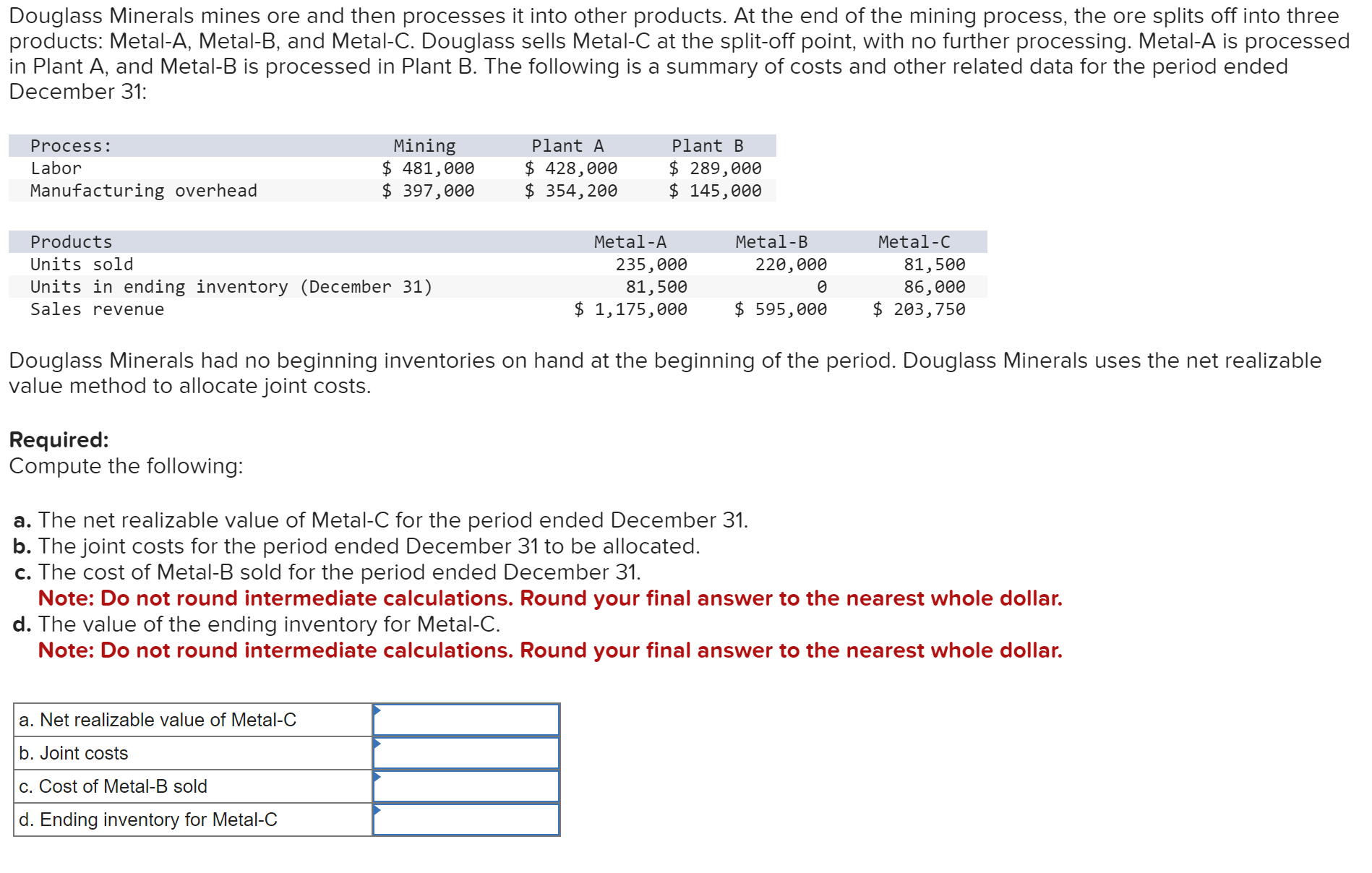Answered step by step
Verified Expert Solution
Question
1 Approved Answer
Douglass Minerals mines ore and then processes it into other products. At the end of the mining process, the ore splits off into three

Douglass Minerals mines ore and then processes it into other products. At the end of the mining process, the ore splits off into three products: Metal-A, Metal-B, and Metal-C. Douglass sells Metal-C at the split-off point, with no further processing. Metal-A is processed in Plant A, and Metal-B is processed in Plant B. The following is a summary of costs and other related data for the period ended December 31: Process: Labor Mining $ 481,000 Plant A $ 428,000 Plant B $ 289,000 Manufacturing overhead $ 397,000 $ 354,200 $ 145,000 Products Metal-A Units sold 235,000 81,500 Metal-B 220,000 Metal-C 81,500 0 86,000 $ 1,175,000 $ 595,000 $ 203,750 Units in ending inventory (December 31) Sales revenue Douglass Minerals had no beginning inventories on hand at the beginning of the period. Douglass Minerals uses the net realizable value method to allocate joint costs. Required: Compute the following: a. The net realizable value of Metal-C for the period ended December 31. b. The joint costs for the period ended December 31 to be allocated. c. The cost of Metal-B sold for the period ended December 31. Note: Do not round intermediate calculations. Round your final answer to the nearest whole dollar. d. The value of the ending inventory for Metal-C. Note: Do not round intermediate calculations. Round your final answer to the nearest whole dollar. a. Net realizable value of Metal-C b. Joint costs c. Cost of Metal-B sold d. Ending inventory for Metal-C
Step by Step Solution
There are 3 Steps involved in it
Step: 1

Get Instant Access to Expert-Tailored Solutions
See step-by-step solutions with expert insights and AI powered tools for academic success
Step: 2

Step: 3

Ace Your Homework with AI
Get the answers you need in no time with our AI-driven, step-by-step assistance
Get Started


